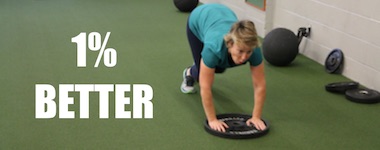Another essential strategy that we utilize to educate our clients on proper nutrition is eating slowly. Eating slowly can be a key ingredient when it comes to reaching your goals with fat loss and habit modification.
What we have witnessed when coaching clients with nutrition is that many times, people will consume meals very quickly and without taking the time to properly chew the food. If you really think

about it, we are always rushing around in this fast paced, information overload, demanding world. Most people in North America eat fast and rarely take the time to savor the food or even chew it properly.
The strategy of eating slowly is a simple and very powerful tool that can help reduce the waistline and help win the battle of fat loss.
Is eating quickly really so bad?
If you look at the research on eating quickly, the results are pretty unanimous! Eating quickly has shown to promote weight gain and uncontrollable eating habits. Some eating disorders, such as binge eating, are linked to the speed of eating.
The good news is, you can control the overeating or speed eating just by slowing down and being present when you are eating.
Slowing down your eating and chewing your food more consistently has multiple benefits:
- Sensing the satisfaction of being full
- Helping with digestion
- Helping reduce the amount of food you consume (portion control)
- Bettering hydration
With all of the benefits of eating slowly and chewing your food more consistently, everyone should try to apply these techniques. If you are more aware of your eating environment, then you will have a better opportunity to control your habits and also control your health.
Here are some helpful tips and tricks you can incorporate to control the speed of your eating:
- Sit down to eat in a calm environment with minimal distractions. Don’t eat while driving, while watching TV, while texting, etc. Pay attention to your food.
- Choose high-fiber foods that take more time to chew, such as fresh fruits and vegetables.
- Put down your utensils between bites. Take a moment. Breathe. If you’re eating with other people, enjoy making witty conversation for a few minutes.
- Try setting a minimum number of chews per bite. This will feel strange at first, but give it a try and see what you discover.
- Use smaller plates or different utensils (such as chopsticks).
- If you find yourself rushing, that’s OK. Put your utensils down and take a minute to re-focus. If slow eating isn’t habitual for you, this will take practice.
- Find another slow eater and pace yourselves to them. Picky little kids and chatty dinner companions who hardly stop talking long enough to take a bite are often ideal for this.
- Set aside time to eat – at least 20-30 minutes for each meal, and preferably even longer at dinner. Don’t just eat “whenever you get around to it” or treat it as an inconvenience. You’re fueling your body and maybe spending quality time with friends and family. That’s important. It deserves an appointment.
The next time you sit down to have a meal, try to control how fast you are eating, and be more present with your food consumption. If you would like some more specific nutritional help, request a free consult.
[us_cta title=”Need help with your nutrition?” message=”Call Us (317) 927-9689 or Fill Out Quick Consultation Form” button_target=”” color=”primary” btn_label=”Click Here” btn_color=”light” btn_style=”raised” btn_link=”url:%2Fconsultation”]


